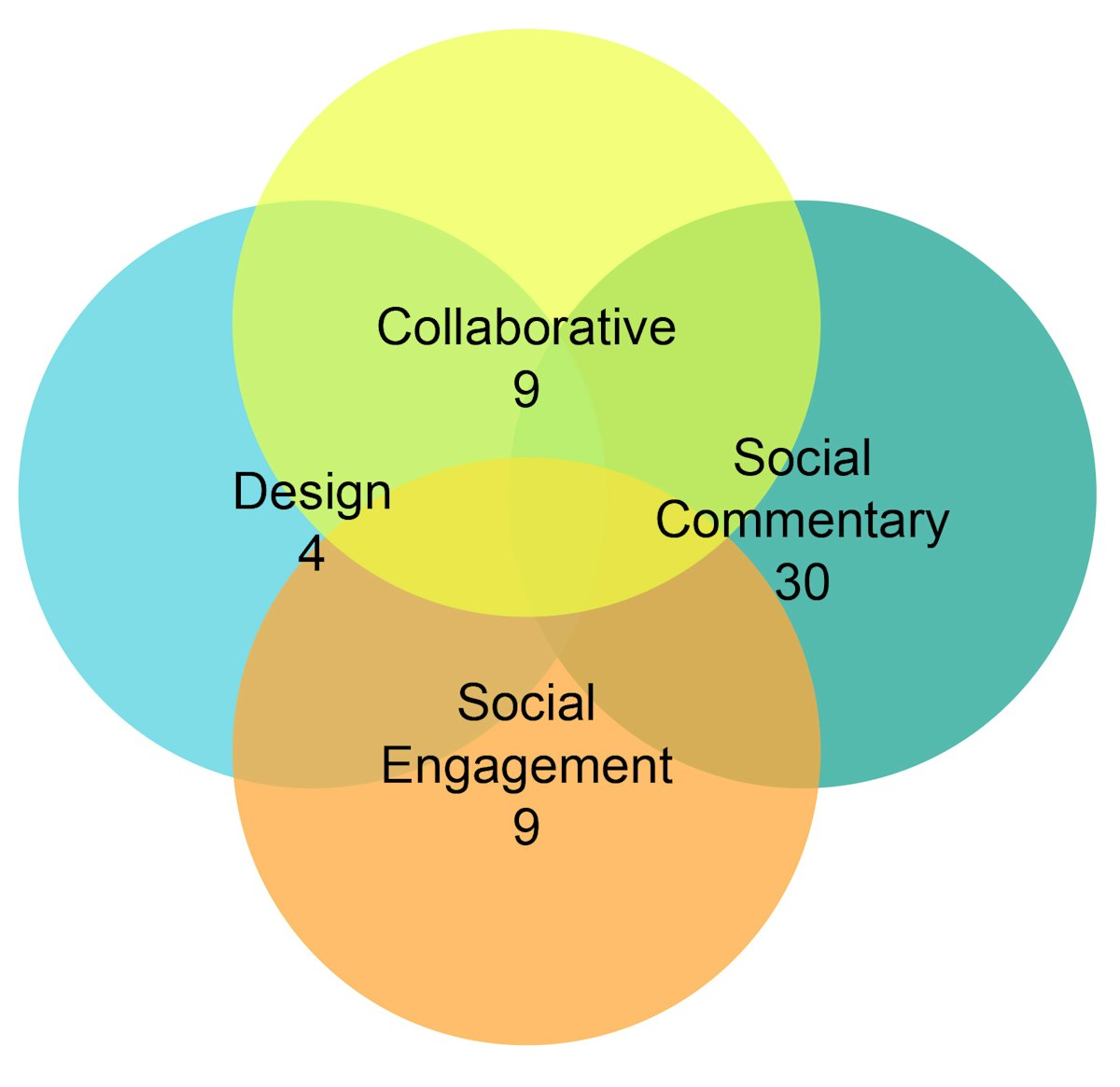Creative Responses: Art, Design, and Firearm Injury Prevention
In late September, 2020, Lia New (BFA ‘22) presented at the annual Firearm Safety Among Children and Teens (FACTS) symposium, The Science of Firearm Injury Prevention: Charting the Path Forward with Data and Innovation.
New’s presentation was part of a panel entitled "Epidemiology of Firearms and Youth" and was reflective of a literature review of artists in the US that engage in works broadly defined as related to Firearm Injury Prevention. New conducted the literature review as part of a research assistantship with Dr. Jane Prophet, Associate Dean for Research, Creative Work, and Strategic Initiatives at the Penny W. Stamps School of Art & Design. Prophet is a member of the university’s Firearm Injury Prevention Steering Committee, which aims to provide recommendations to U-M President Mark Schlissel on an overarching structure to lead the nation in the study and prevention of firearm injury and death.
“I was asked to bring my experience with interdisciplinary research across art and science to the conversation, to help inform the committee about how teams that include artists and designers might think differently in productive ways about this challenge,” Prophet said of her appointment to the committee.
“Using methods from art and design alongside those from social work and public health, I believe that we can collaborate with communities to, for example, re-design safer neighborhoods; use creative projects to raise awareness, and co-create events and artworks through which people impacted by gun violence can heal.”
For the research conducted with support from Lia New, Prophet examined thirty-nine art and design works to find patterns in them and to find a typology for firearm injury prevention. Together, the research duo uncovered four major categories to examine creative work about firearm injury prevention: social commentary, social engagement, collaborative work, and design.
When asked about works that made a lasting impression on them personally, New reported two works in particular: Mirror Casket by De Nichols, Marcis Curtis, Sophie Lipman, Damon Davis, Elizabeth Vega, Derek Laney, and Mallory Nezam and The Gun Chronicles: A Story of America by JR.
The collaborative community aspect of Mirror Casket was especially resonant for New. As they report, Nichols worked with other artists in their community of Ferguson to create after the murder of Michael Brown. They marched this handmade casket through Ferguson during the following protests, reflecting the artists, protesters, and police officers in the mirror shards.
For The Gun Chronicles, JR traveled across the U.S. collecting stories from about 400 people and their relationships with guns. These stories ranged from gun fans, to military, to those harmed by gun violence. The scale and scope of the work was impactful for New, alongside the method of compilation. “The most interesting part of this work for me is that JR compiled the video interviews into one large collage,” New said.
In their presentation, New highlighted the important relationship between social engagement and collaborative work, noting that many works included in the literature review (six out of nine represented in each category) occupied both of these categories. To New and Prophet, this demonstrates the idea that meaningful social engagement often centers community collaboration.

New also noted in their presentation that while three of the categories — social commentary, social engagement, and collaborative work — warehouse works thematically, across a broad range of media, one category is media-specific: design.
With only four works uncovered that could fit in the “design” category, New and Prophet were eager to examine the media on its own, looking into the reasons why so few design works explore the challenges of firearm injury prevention. Preliminary thoughts are that funding for speculative design, the exploratory realm where this work often plays out, is relatively scarce. The field has an opportunity to engage designers and their unique skill set through intentional inclusion on interdisciplinary creative teams. Similarly, creative collaborations with social scientists could lead to stronger outcomes and funding opportunities.
“From reading the text associated with the works, small amounts of funding can have a catalyzing effect,” New reports. “Things like events, reports, and community engagement can be important to see the lasting effects of the work.”
“I had no experience with working on research before, but Jane trusted my skills in helping her on this project,” New said. “The best part about working on this project with Jane, was studying so many works and discussing them together. We had our own expectations going into the works, and seeing how those panned out in the end was interesting.”
Learn more about the FACTS Symposium:The Science of Firearm Injury Prevention: Charting the Path Forward with Data and Innovation.